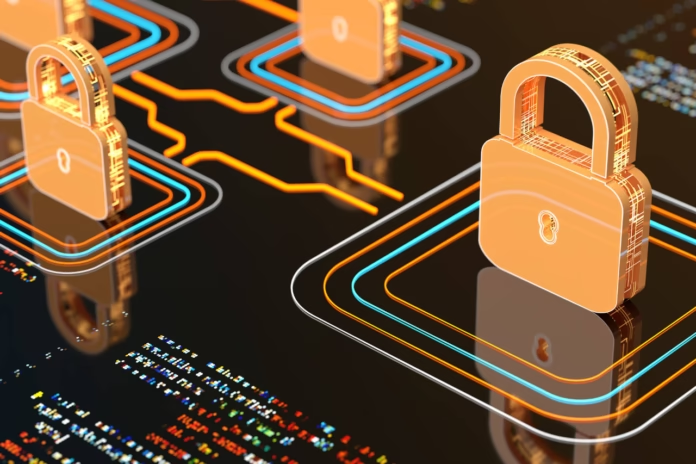In 2025, remote and hybrid work isn’t a trend—it’s a business model. But with flexibility comes vulnerability. Picture your employees working from home, cafés, co-working spaces, airports. Each location adds one more entry point to your network. One more opportunity for attackers to slip in.
We’ve spent decades tightening cybersecurity within the office perimeter. But what happens when that perimeter no longer exists?
At Arrow PC Network, we’ve been on the frontlines helping businesses transition securely into remote-first models. Our IT Services in cybersecurity, technology, and remote work risk management are tailored to meet today’s evolving threat landscape—and future-proof what comes next.
Remote Work Is Here to Stay and So Are Its Threats
According to Gallup, over 50% of U.S. employees now work in a hybrid setting, and 27% are fully remote. But here’s the kicker: 64% of remote workers say they’d leave their job if flexible work was taken away. That’s not a statistic; that’s a talent retention ultimatum.
Businesses want productivity and flexibility. But they also need protection. Especially now that AI-powered cyberattacks are amplifying every threat vector—from phishing to cloud misconfigurations.
Remote work isn’t just about location—it’s about security posture. And Arrow PC Network is helping IT leaders build that posture, brick by digital brick.
10 Remote Work Cybersecurity Risks Every Business Must Understand
An Expanding Attack Surface
Every laptop, phone, or smart device connected from a remote location is a potential doorway for attackers. And guess what? The more devices in play, the harder it becomes for security teams to monitor, patch, and protect.Less Oversight, More Data Risk
Security teams can’t look over shoulders anymore. That leaves sensitive data at risk—whether exposed on a café table or screen-grabbed by a departing employee. Even with solid policies, remote work opens up new gaps.Compliance Headaches Multiply
Your data might be subject to EU or India-specific regulations. But if your team is accessing it from another region, even temporarily, you could be breaking compliance without knowing. That’s a legal minefield no CIO wants to step into.Phishing Attacks Love Distraction
Home environments are full of interruptions. That moment of inattention is all it takes to click a malicious link. And without face-to-face coworker validation, spoofed emails feel more real than ever.AI Is Now Helping the Hackers
Imagine receiving a perfectly worded email from your “boss” asking for credentials. Except it’s not them—it’s an AI-generated, hyper-personalized scam. Attackers aren’t working harder. They’re working smarter—and faster.Unsecured Devices at the Center of Work
Many remote employees still use personal laptops or phones, which may not meet enterprise-grade security standards. IT leaders can mandate policies, but compliance? That’s another story.Vulnerable Home and Public Networks
Cafés, airports, or even outdated home routers can become weak links in your security chain. Unlike corporate networks, these aren’t actively managed or monitored.Network Sharing Gone Wrong
In homes or public settings, a compromised device on the same network can serve as a gateway to attack your employee’s machine. It’s risk by association—and it’s more common than you’d think.Webcam Hijacking and Video Conference Intrusions
We all remember the “Zoombombing” chaos during the early pandemic days. Though less frequent now, attackers still exploit under-secured video platforms to eavesdrop or gather intelligence.Chat Platforms as Silent Breach Points
Hackers now infiltrate enterprise chat platforms, lurk unnoticed, build trust, and strike when least expected. If employees never meet face-to-face, impersonation becomes dangerously easy to pull off.
The Real-World Stakes
Companies don’t just risk losing data—they risk losing reputation, revenue, and resilience. We’ve seen this repeatedly at Arrow PC Network, especially with clients who came to us after near misses.
Cybercriminals are targeting the remote work model—because they know it’s under-protected. But here’s the upside: you can take action.
7 Cybersecurity Best Practices for the Remote-First Era
Nail the Basics First
Inventory all assets, enforce VPNs, require antivirus tools, and enforce strong password policies. It’s not flashy, but these fundamentals form your first line of defense.Know Your Data—and Guard It Well
Where is your most sensitive information stored? Who has access? What’s encrypted? If you can’t answer those instantly, your data isn’t safe.Prioritize Risk-Based Vulnerability Management
Patch what matters most. A well-targeted vulnerability program reduces your overall exposure and boosts your defense posture without overwhelming your team.Adopt a Zero-Trust Mindset
Trust no device, no user—until they’re verified. With remote work, zero-trust isn’t optional anymore. It’s foundational.Deploy User Behavior Analytics
With machine learning, you can now spot suspicious behavior—like a user accessing data they’ve never touched before—and respond before damage is done.Lock Down Cloud Configurations
Misconfigured cloud access is a golden ticket for attackers. Review access permissions, enable MFA, and routinely audit configurations across platforms.Update Your Policies for the Hybrid World
Many orgs still run on pre-pandemic playbooks. It’s time to rewrite them. From chat app access control to remote device offboarding, your policies must match today’s threat surface.
Human Connection Still Matters in a Remote World
Surprisingly, one of the strongest cybersecurity defenses is… human interaction.
When teams know each other—when they’ve shaken hands, shared coffee, or solved problems in person—they’re more likely to detect odd behavior. Fostering real connections improves not just morale, but digital vigilance.
Arrow PC Network encourages its clients to think beyond tech. We help build cybersecurity strategies that integrate people, process, and platforms—because real security is never just a toolset. It’s a mindset.
Don’t Wait for the Breach
Remote work isn’t going away. And neither are the cybercriminals.
Whether you’re a startup founder, CIO of an enterprise, or managing IT in a mid-sized company, protecting your distributed workforce is now a full-time job. With IT Services by Arrow PC Network, we equip businesses to handle this challenge with resilience and clarity.
Because in this new world, cybersecurity isn’t just about protection. It’s about enabling growth, preserving trust, and keeping business moving—no matter where your team logs in from.




